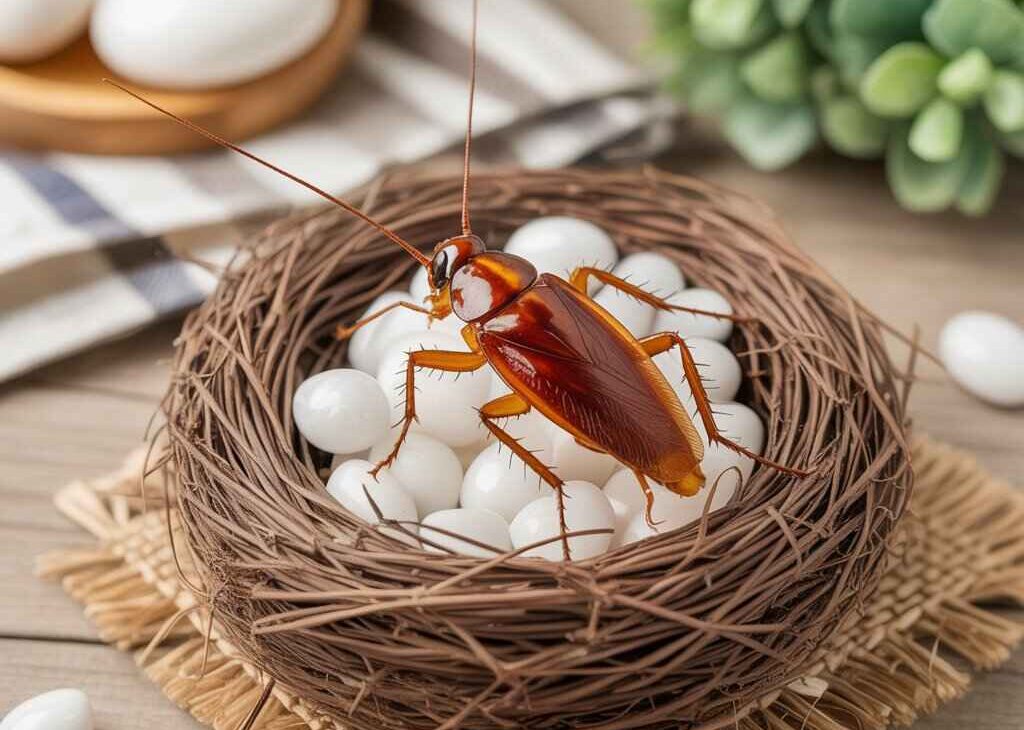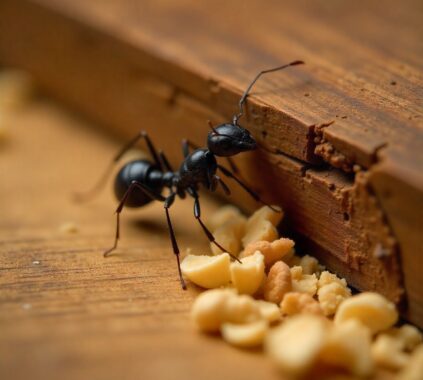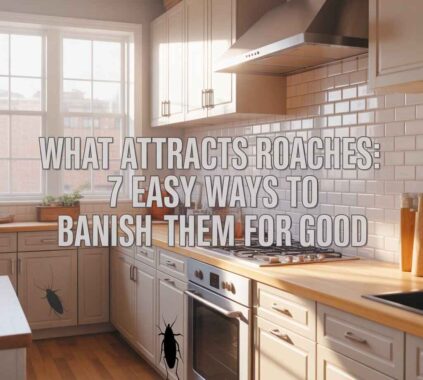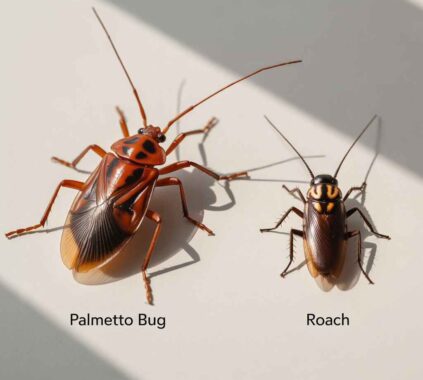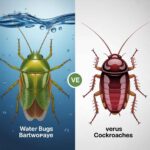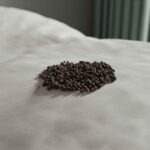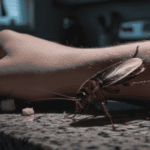Table of Contents
Why You Want to Get Rid of Cockroach Nest
If you’ve ever had a cockroach dart across your floor, you probably have felt shock and disgust along with fear. And if you ever saw more than one, you might ask yourself: “Where are they all coming from?” Well, it could very well be a cockroach nest that you are dealing with. This article will provide you with a basic guide to cockroach and how to identify them so you can be rid of them forever.
You’ll learn their most successful methods for cockroach control, why they lay low in certain places and even pick up a few expert pointers to help you avoid future infestations. So fasten your seat belts for a deep dive into both these night dwellers and the nests they make their own!
What Do Cockroach Nests in the House Look Like?
A cockroach nest is not what you probably have in mind for other insects, such as bees or ants. These vermin don’t have efficiently organized hives or mounds. By cockroach, I mean a group of them that collect somewhere dark and inconspicuous for the purposes of shelter, food and moisture.
Cockroaches are not social insects like ants. They have no queen or clear colony structure. But they do have an instinct of hanging out in places where they feel safe and there is food and water. So the many thousands of cockroaches infesting one building are likely to be clustered into a few dozen or so denning in that building, he said.
The Cockroach Colony, Explained by Science
Cockroaches leave aggregation pheromones that attract others to the same place. That’s because as soon as one cockroach discovers a good hiding place, it sends out the other cockroaches to head that way. These nests are often found in dark, warm, and most places—such as under appliances, within walls, and basements.
But when they say “nest,” don’t be fooled. Cockroaches, unlike bees or termites, do not construct elaborate structures and do not use nests for reproduction. Instead, they congregate in an area where they can easily source food and water – all the while being protected from predators.
Cockroach Nest Images: What Does a Cockroach Nest Look Like
Looking at a photo of a cockroach nest can give you an idea of what to look for if you’re trying to determine if your home is infested. Cockroach nests are usually dirty and unhealthy, with many cockroaches inside along with egg cases and fecal matter. The nests are typically located in dark, moist places like behind appliances, in walls and basements.
Cockroach Feces: Tiny, rounded, dark brown to black dots (resembling coffee grains). You can frequently find them near the nests.
Egg Cases (Ootheca): A cockroach lays its eggs in a pill shaped, brown colored covering or case known as oothecae. Each case can hold as many as 40 eggs and are most commonly encountered in the dark, crevices of a home.
Exuviae: Cockroaches molt, or shed their exoskeletons, as they mature. If you find shed skins then your cockroach nest is active.
Musty Smell: If a musty smell accompanies a cockroach infestation, it may be due to the aggregation pheromones they emit. This odor can help you identify the direction of the nest.
If you are not sure yet about what to look for, you can check out some cockroach nest pictures on the internet, and match your findings.
Kill The Cockroach Nest And How To Get Rid Of It
When you have found out a cockroach , then it is time to destroy it. Not only are cockroach bad for your health — the creatures themselves carry disease and bacteria. Here’s how to do it safely, step by step:
Clean and Declutter
Begin by cleaning areas where you’ve seen cockroaches. Get rid of any food, standing water, and waste that will attract them. Decluttering also removes hiding places.
Seal Cracks and Gaps
Seal any cracks and gaps in walls, floors and around windows with caulk. That will help keep out new ones.
Apply Insecticides
Spray or bait with cockroach products in spots where you have discovered nests. Please read the product manual carefully for detailed use and safety precautions!
Monitor and Maintain
Monitor for cockroaches at once following the application. If it continues to bight, you may need to call a professional pest control operator.
Cockroach Nest in House: Where to Check
When digging around for a cockroach in house, it’s helpful to know where to start. These little BAES love dark, warm, and wet. Here are some of the popular cockroach nests:
Behind Appliances: Areas such as behind refrigerators, stoves and dishwashers have warmth, moisture and food supplies for cockroaches to nest.
In Cabinets and Drawers: Cockroaches are commonly found in kitchen or bathroom drawers, especially those used to stored food.
Under Furniture: You may not have cleaned under your furniture in a while and that could be an ideal place for cockroaches to hide.
Basements/Crawl Spaces The dim, quiet and humid spaces that are basements and crawlspaces area perfect location for cockroaches to skulk about and reproduce.
German Cockroach Nest: Hiding Spots
Among the most prevalent cockroach nests you can be likely to see when looking for hiding places in your abode is one created by the German cockroach. Such roaches are usually much worse, and they love warm places near food. When searching for a German cockroach, check in the following spots:
Behind Refrigerators: Because these spots combine warmth and food, researchers believe they make an ideal nesting ground for German cockroaches.
Under Sinks and Dishwashers: German cockroaches are drawn to water sources, so any areas where there’s been a plumbing leak would be good bets.
If you believe you have discovered a German cockroach nest, consider applying focused treatment by hiring a pest control professional.
Fridge Cockroach Nest: Why Do They Occur?
A fridge cockroach can happen when cockroaches take up home around your fridge in search of shelter and food. The warm atmosphere around the fridge, plus crumbs or liquids that are spilled, all serve as a “nesting nest station.” To avoid this:
Regularly clean around your refrigerator.
Close off any gaps around the fridge.
Remove food Using airtight containers, store food.
Roach Nest in Wall: How to Find & Get Rid of It
Discovering a roach nest in wall is difficult, as these nests tend to be buried. Symptoms of a roach nest in wall are:
Droppings Look for cockroach droppings around wall cracks and other dark areas.
The not-so-recent smell of aggregation pheromones.
Looking in a small hole or crack and finding cockroaches when you never even knew they had an opening.
To deal with a cockroach in wall, you may need to get the help of an exterminator who can check out and treat that problem. It may be possible to correct the infestation by filling wall cracks and applying insecticides.
What does a Cockroach Nest Smell Like?
A mother cockroach’s den usually generates a specific damp smell. This scent is an aggregation pheromone secreted by the cockroaches when they are in close proximity. If you notice this stink in your house, it may indicate that a cockroach nesting somewhere inside. The odor could get worse with heavier infestations.
How to Handle the Smell:
Air out stuff by opening windows and running fans.
A thorough cleaning can help remove any potential food sources and also the scent.
Have a pest control specialist deal with the nest.
Keeping Your Home Free of Cockroaches Nests
FAQS
1. What does a cockroach nest look like?
A cockroach nest is messy with droppings, egg cases, molted skin, and a musty odor, often hidden in dark areas like behind appliances or inside walls.
2. Where do cockroaches build their nests?
They nest in warm, dark, damp places near food and water, like behind refrigerators, inside cabinets, or in basements.
3. How can I get rid of a cockroach nest in my house?
Clean, seal cracks, and use traps or insecticides. For serious infestations, call a pest control expert.
4. What does a cockroach nest smell like?
It has a musty odor from aggregation pheromones, which intensifies with the infestation.
5. Can I find a cockroach nest in the walls?
Yes, cockroach nests can be inside walls, especially if there are cracks.
Conclusion:
Cockroach nest is something that can give you anxiety and stress as well. But if you know where to look, what signs to look for and learn how to properly remove the nest then you can restore your home. Or not! But whether you decide to tackle the problem yourself or hire an expert, the thing is: You gotta move quickly before the infestation multiplies.

